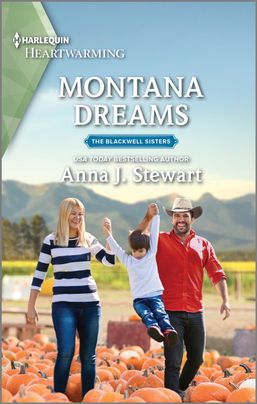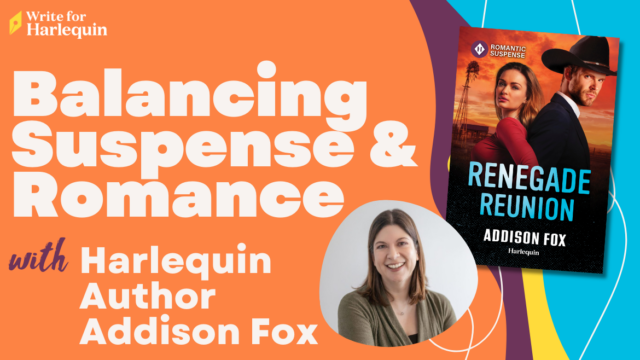
We asked the authors of Harlequin Heartwarming’s latest continuity, The Blackwell Sisters, how they do it—how do they write long contemporary romances that engage readers to the last page? If you’ve ever tried writing for one of Harlequin’s longer categories and had trouble writing to the length required—for Heartwarming, 70, 000 words!—you might be asking the same question.
Is it by creating sustainable conflict, steady character development, adding lots of fun drama? The Blackwell Sisters authors are here to deliver their best advice!
Melinda Curtis
(Author of Montana Welcome)

I believe one of the best ways to create enough story for 70,000 words or more is to start with a hero and heroine with lots of conflict (internal and external) and contrasts, which is why I don’t like writing reunions or friends-to-lovers tropes in longer books. Presumably, in those stories, they already know a lot about each other, and possibly have accepted their differences on some level. In my book, Montana Welcome, I tried to lay a foundation of contrasts and conflict. Due to an injury, my heroine doesn’t have a reliable grip, which can put her at risk in physical situations. My hero is a working cowboy, a horse trainer—everything is physical. She’s from the city. He’s from the country. She’s a risk-taker. He plays it safe. She’s a runaway bride thinking about returning to the chapel, if only because her family deserves to be told the truth about why she left. He’s being paid extra to escort her to Montana and make sure she doesn’t return to San Diego. Contrast and conflict—try it!
Amy Vastine
(Author of Montana Wishes)

One thing I love about writing longer stories is being able to have a secondary storyline besides the romance. It might be a budding romance between two secondary characters or maybe a relationship in need of repair between one of the main characters and someone else in their life. Having more “time” to spend on flushing out some of those other stories makes that world feel fuller and more real. It makes your characters more complex and layered. When writing for a longer series like Heartwarming, think about which secondary conflict can exist between your hero/heroine and someone else in their life. You’ve got the words—use them!
Anna J. Stewart
(Author of Montana Dreams)

One might say 70, 000-word stories are short for me. When I first got serious about writing, I found the 100, 000-word length confining. I’m not kidding. Ask my critique partners! Amazing what learning “on the job” will do. For me, writing longer category romance is a good fit. I’ve written a lot of novellas and I’ve found when I do, I tend to do reunion or friends-to-lovers tropes because there’s a built-in history. Writing longer gives me more time and words to explore the characters as individuals and also who they are together. More importantly, it can help me see what’s possible between them. There’s also more room to play. I can use that roller coaster of emotions and events a bit more loosely and include some fun scenes that might not make it into a shorter story. Don’t get me wrong—every scene still has to count and move the plot forward. But those extra pages give me, and my characters, a bit more breathing room.
Carol Ross
(Author of Montana Match)

Your cast of characters. In this case, I’m talking about secondary characters. I’m a huge fan of adding the classic best friend dynamic or sibling/relative relationship. It doesn’t matter if that’s a free-spirited aunt, an irresponsible grandpa, or an uptight co-worker. It’s fun for the heroine or hero to have someone to share their romantic angst with and seek advice from. These buddies can provide perspective and add some humor. They don’t have to be right! In fact, it can be far more interesting and/or funny when they’re not. With longer stories, you have the freedom to not only explore those relationships but also let the reader get to know those secondary characters (and hopefully fall in love with them). You can give them a “mini-story” as well. (Just be careful not to make them more appealing than the hero/ine!)
Cari Lynn Webb
(Author of Montana Wedding)

Find critique partners you like and trust. That’s my best advice for writing longer romances (and really for every manuscript). Great critique partners point out pacing issues, character inconsistencies and plot holes—all things to keep an eye on for a well-written romance. I’ve found myself swept into my story more than once, with words settling onto the pages like colorful leaves on the ground in fall, only to send my pages to my critique partners who point out I lost an entire plot thread. Or worse, to be told my hero was unlikeable and my heroine a doormat. That’s the key: you need to trust. Trust that your critique partners will tell it to you straight with your best interests in mind. You can only grow as a writer with honest, helpful feedback. And you can reach that 70, 000 word count with critique partners who will not only offer feedback, but also help you find your way back to the heart of your story.
And there you have it, from the mouths (or keyboards) of our authors! Check out The Blackwells Sisters miniseries to read the latest from these authors and get great examples of this advice in action. We hope their wise words help with your own romance writing. Don’t forget to trust your instincts (and your characters and critique partners), and have fun with it!
What advice or challenges do you have when writing longer category romance? Share with us in the comments below!









